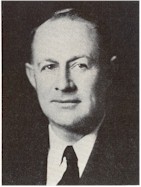John Hammond
- Birthdate
- 1888/04/13
- Birthplace
- San Francisco, CA, USA
- Death date
- 1965/02/12
- Associated organizations
- Hammond Radio Research Laboratory
- Fields of study
- Radio, Music
- Awards
- IRE Medal of Honor
Biography
John H. Hammond, Jr. was born in San Francisco, California, on 13 April 1888. His father was a mining engineer whose work took him to South Africa, England, and several parts of the United States. John Hammond frequently traveled with his father and also, through him, met such leading engineers as Edison, Marconi, and Bell. While much of his education took place outside of formal setting, Hammond attended the Lawrenceville School in New Jersey, where he invented a circuit breaker that allowed him to duck the school’s lights-out rules. He completed his formal education with a B.S. degree from Yale University in 1910.
He started his career in by working at the Patent Office in Washington, D.C. Interested in remote control, and possessing good access to start-up money, he founded the Hammond Radio Research Laboratory soon afterward. From 1912 until 1928, the Hammond Laboratory was in a building above the rocky Gloucester coastline, in Massachusetts, where much pioneering work in radio was accomplished. Hammond received over four hundred and twenty U. S. patents, which underlie much of modern electronic technology.
Hammond did extensive work for the U.S. military services starting in 1912 when the chief of Coast Artillery for the Army witnessed in Gloucester the successful radio control of a boat from shore. During both world wars, the Hammond group developed radio and other remote control systems applicable to waterborne and airborne missiles.
However, Hammond did not only work in remote control. Love of music fostered his experiments in the application of electronics to various other fields. In communications, the Hammond group contributed to development of the triode for amplification purposes, the i-m principle for selectivity, and of f-m techniques for broadcasting and telephony. Well known are the "Dynamic Amplifier" for expansion, compression, and noise reduction in audio systems; the "Accentor" for improving the tonal performance of pipe organs; and the "Telespot" for the momentary injection of a high-speed confidential facsimile service into a television channel with automatic reception, recording, processing and display.
The value of Hammond’s inventions was well recognized. The U. S. Government acquired rights in over ninety of these for radio-dynamic purposes, and Radio Corporation of America (RCA) acquired rights in over one hundred and sixty for radio-electronic purposes.
Hammond’s interests beyond engineering both supplemented and intertwined with his scientific work. From 1928 on the setting of Hammond's work was a medieval castle-museum , complete with a moat, drawbridge and towers, that he had erected on his Gloucester coastline property. In the Great Hall of the castle is the magnificent 10,000-pipe organ designed by Hammond and built over a period of 20 years. The Great Hall has been used for recordings by some of the major record companies, and some of the greatest organists in the world have played there. The Hammond Castle also housed his impressive collection of art. The list of Hammond colleagues, correspondents and consultants over the years reads like a roster of the radio-electronic pioneers: de Forest, Tesla, G. W. Pierce, Langmuir, David Sarnoff. Harvard's Dr. E. L. Chaffee became a consultant to the Hammond Laboratory as early as 1918.
Hammond was given an honorary Sc. D. degree from George Washington University in 1919. He received the IRE Medal of Honor in 1963, "For pioneering contributions to circuit theory and practice, to the radio control of missiles and to basic communication methods." He was married to the former Irene Fenton, an artist, from 1926 until her death in 1959. He passed away on 12 February 1965 in New York City.
Further reading
“John H. Hammond Jr. Dies; Electronics Inventor was 76,” New York Times, Feb. 14, 1965.
